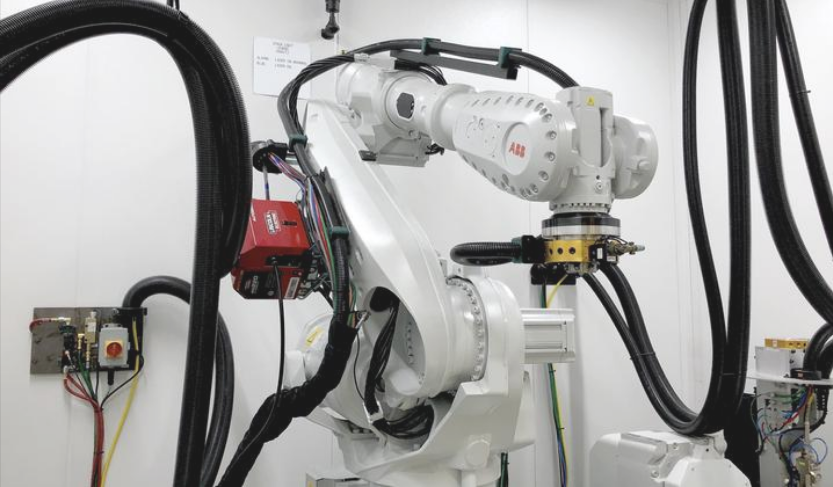 Lockheed Martin and the Office of Naval Research will be investigating the use of artificial intelligence to train robots to independently oversee the 3D printing of complex components. They are customizing multi-axis robots that will deposit material using laser beams. The two organizations are working together to develop software models and sensor modifications to help the robots build better parts, with the goal being for the robots to monitor the process and make adjustments on their own during printing to achieve the correct material properties.
Lockheed Martin and the Office of Naval Research will be investigating the use of artificial intelligence to train robots to independently oversee the 3D printing of complex components. They are customizing multi-axis robots that will deposit material using laser beams. The two organizations are working together to develop software models and sensor modifications to help the robots build better parts, with the goal being for the robots to monitor the process and make adjustments on their own during printing to achieve the correct material properties.
“When you can trust a robotic system to make a quality part, that opens the door to who can build usable parts and where you build them,” said Zach Loftus, a Lockheed Martin fellow for additive manufacturing. “Think about sustainment and how a maintainer can print a replacement part at sea, or a mechanic print a replacement part for a truck deep in the desert. This takes 3-D printing to the next, big step of deployment.”
 The team will vet common types of microstructures used in a 3D print, measure how the 3D printers perform, and align them with the microstructures. They will then gauge the performance of the material properties to develop a working system. The team will be starting with Ti-6AI-4V, the most common titanium alloy, and will integrate related research with seven national lab, university and industry partners.
The team will vet common types of microstructures used in a 3D print, measure how the 3D printers perform, and align them with the microstructures. They will then gauge the performance of the material properties to develop a working system. The team will be starting with Ti-6AI-4V, the most common titanium alloy, and will integrate related research with seven national lab, university and industry partners.
The contract comes after an investment Lockheed Martin made in June in nTopology, which creates additive manufacturing design and optimization software. Lockheed Martin has been involved in 3D printing for a long time, but its activities this year show that the company is serious about continuing to invest in the technology well into the future. This is good news for Lockheed’s many clients, who will benefit from 3D printing technology’s ability to create complex parts in less time and with less cost.
The Office of Naval Research contract isn’t the only one awarded to Lockheed Martin in the past week. The company was also given a $632 million contract to produce Hellfire II missiles for the Netherlands and Japan. The US Army’s Hellfire missile replacement, the joint air-to-ground missile, or JAGM, was cleared for low-rate initial production in June. They will fire from a broad range of platforms including rotary and fixed-wing aircraft as well as ground vehicles, boats and unmanned aircraft.
These missiles will be produced at Lockheed Martin’s facilities in Orlando, Florida, with the work estimated to be completed in 2021.
Discuss this and other 3D printing topics at 3DPrintBoard.com or share your thoughts below.
Subscribe to Our Email Newsletter
Stay up-to-date on all the latest news from the 3D printing industry and receive information and offers from third party vendors.
Print Services
Upload your 3D Models and get them printed quickly and efficiently.
You May Also Like
3D Printing Financials: 3D Systems Turns Profit Amid Revenue Decline
3D Systems (NYSE: DDD) has reported its financial results for the second quarter of 2025, showing a drop in revenue but a sharp improvement in profitability, driven by cost reductions,...
Axtra3D Reports Strong Growth in First Half of 2025
Axtra3D, a company known for its high-speed Stereolithography (SLA) 3D printing technology, is seeing strong momentum in 2025. In the first half of the year, the company grew its revenue,...
Why Align Technology’s Slowdown Still Matters to 3D Printing
Align Technology (Nasdaq: ALGN), the company behind Invisalign clear aligners, reported lower-than-expected results for the second quarter of 2025. While the slowdown is tied to broader economic and dental industry...
AM Can Evolve to Drive Entire Markets, and the Dental Industry is Proof
In an era of challenges to the additive manufacturing (AM) industry, mostly driven by the technology’s relatively high cost at a time when financing production equipment is more expensive, many...






























